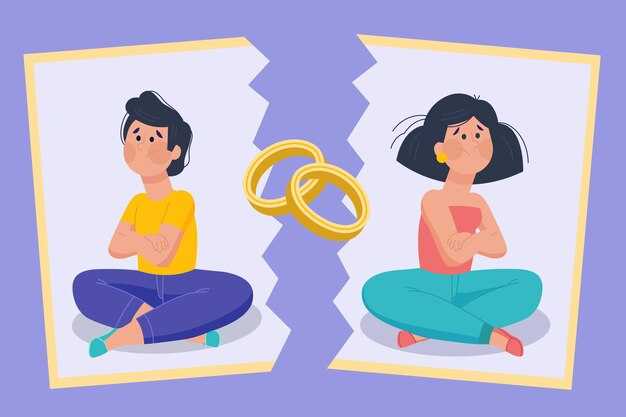Being raised amid abuse and neglect nearly always saps a person of their natural strength. You begin to doubt your worth, lose faith in your ability to make things better, and feel powerless to change your life. Recovering that sense of goodness and agency takes enormous effort, persistence, and sometimes a little luck. Yet it’s possible to remember who you are, reconnect to your instincts about what’s right, and believe that you are worth the work of becoming more—kinder, emotionally healthier, more trusting, socially connected, better organized, more patient, more capable, more creative, and financially stable so you have options and some upward mobility. Everyone wants these things, but trauma can seriously undermine your capacity to pursue them.
Dysfunctional families often don’t set out to extinguish the good in a child, but patterns arise that do just that. I’ll point out five ways that growing up with trauma can leave you disempowered, and then move on to how to heal.
First, parents’ conduct—or even their casual put-downs—can implant a narrow or negative picture of who you might become. Your talents go ignored and underdeveloped; without encouragement or guidance they atrophy. You end up having to teach yourself persistence, self-discipline, and follow-through, which is incredibly difficult without role models.
Second, household chaos can isolate you. If home life teaches you to hide, to give up, to shut down or to tolerate abuse, you learn not to assert yourself. That isolation cuts you off from people who are more functional and hopeful—those who could model realistic goals, healthy relationships, and offer opportunities for education or career growth. It’s not simply about class or money; it’s about being around steady, confident people who keep themselves together. That kind of exposure is healing medicine for a demoralized child. Think back: did you have people like that around you? When you met them, could you relax and be yourself, or did they trigger you?
Third, the people who remain in your orbit after isolation are often the ones who reflect the trauma—cynical, stuck, and quick to criticize anyone who begins to rise. When you begin to succeed a little, those who are still hurting can feel threatened and may try to drag you back down with shame, blame, or pressure to conform. There’s a kind of peer pressure that discourages showing strength or reaching up—an almost hostile force that pulls you back into the group. Sometimes that drag is external; sometimes it’s an internal surrender: it feels easier to stop trying, to join the chorus of resentment. But doing so only perpetuates the instability and isolation you were trying to escape, and makes the thought of healing seem pointless. Still, that small healthy voice inside—the part that wants better—remains.
Fourth, loneliness and self-doubt leave you vulnerable to choosing partners who echo your early wounds—people who tear you down yet feel familiar. Out of a hunger for connection you may rush into relationships with someone you know is not good for you, rationalizing the choice. That pattern destroys self-confidence and tightens your social circle around similarly damaged people, risking the repetition of unhealthy family dynamics and passing trauma down to the next generation.
Fifth, a hard upbringing can push your life choices into survival mode: quick, temporary jobs, transient housing, short-term relationships. Burnout, mental scatter, depression, and fear make it hard to hold steady, and yet many of us still feel a persistent inner knowing that life is meant to be more. Even when you’re angry, embarrassed, making mistakes, or sabotaging relationships, a small sense remains that you’re meant for something better. You may have only a flicker of that awareness, but it’s there—an internal ideal self that points toward safety, achievement, and love.
That ideal self is part of your mind even if you’ve never learned how to become that person. Years can pass feeling stuck, as I know from my own story: single parenthood, poverty, undiagnosed CPTSD symptoms, and a sense that life should be different. Yet that yearning persisted, a tiny light just out of reach. Even when I behaved badly—yelled, ruined friendships, fell into bad relationships—I still felt there was more for me. That feeling, even if faint, is precious. It signals that your core values—like kindness—still exist inside you. When you snap at someone and feel ashamed, that discomfort is actually the good part of you noticing that you missed the mark. That moral sense is an indicator of what you’re capable of and want to be.
Trauma doesn’t annihilate who you are, but it can block access to your power: imagination, discernment, the ability to change your mind, to create a better life. Healing restores that inner authority by freeing you from trauma-driven thinking—the repetitive fears and resentments that replay the past all day. Thoughts like “I’m no good,” “Nobody likes me,” “I can’t focus,” “I work too hard” or “It’s too late” keep you stuck. Naming those thoughts and asking for them to be removed, or otherwise releasing them, opens space for a different view. If you want a concrete method for doing this, there’s a free set of practices I teach—often called the Daily Practice—that many people have found helpful. It’s linked on my website and in descriptions and includes ways to put these fearful and resentful thoughts on paper and move them out of your head.
Trauma-driven thinking glues you to a disempowered self. If you keep replaying what happened, you remain stuck. What happened to you was real and painful, but it doesn’t have to define you. As you identify and let go of those fear-based thoughts, a clearer sense of who you really are emerges—someone who deserves better and can start to take steps in that direction. When the fog clears, choices appear: you don’t have to stay in a destructive job, live isolated forever, or tolerate abusive treatment. You may not know the exact path yet, but when your true self is alive again, the first step gets easier and the second step becomes visible. Healing is a sequence of small, imperfect moves toward that inner light.
Try things experimentally: test “What happens if I say no?” or “What if I speak up?” and accept that sometimes you’ll screw up and then course-correct. With support and tools, you gain the freedom to make mistakes, learn from them, and close the developmental gaps left by a dysfunctional upbringing. I call that gap a developmental delay because survival in childhood often prevented opportunities to practice adult tasks—planning, steady work, regulated social interaction. Taking small, steady risks with good tools and support helps you grow.
What strengthens you are practical tools and communities. For many, peer groups, 12-step fellowships, and programs like the one I run provide vital support—free or low-cost places to practice new habits, be comforted, and get accountability. My free Daily Practice offers techniques, plus live Zoom calls where people practice together and ask questions. Being around people on a healing path—ideally walking a similar journey—matters enormously. It’s hard to change alone.
When I speak of empowerment, I mean an internal resource—the life force that gives you energy for basic daily actions: getting up, showering, working, leaving a toxic job, learning new skills, holding your ground around difficult people. Empowerment isn’t power over others; it’s the inner capacity to know your next right action and act on it. That power grows through consistent positive actions and by avoiding behaviors that drain you. Complex PTSD commonly erodes this power in many predictable ways. Below I list typical trauma-driven behaviors that sap energy and then outline how to reclaim your power from each pattern.
1) Expecting someone to rescue you. Many people carry a lingering childhood hope that someone will step in and fix things. If caregivers failed you then, you might be stuck waiting for help now. The hardest—but most freeing—realization is that for many parts of your life, you’ll have to step up and help yourself.
2) Believing an apology from the person who hurt you is required for healing. Waiting for that apology hands your recovery to someone else. While an apology can be meaningful, you don’t need someone else’s admission of guilt to start reclaiming your life.
3) Seeking approval from people who demean you. Chasing validation from those who won’t offer it drains you. Learning to approve of yourself—by doing things you can genuinely be proud of—is crucial.
4) Avoiding conflict entirely. There are times when skipping a toxic family dinner is wise, but habitually avoiding all conflict can make you weak at asserting needs, which eats away at your power.
5) Fighting everyone. The other extreme—constantly being combative—also exhausts you and prevents effective problem-solving. Speaking up is healthy; chronic rage is draining.
6) Using intoxicants to regulate. Whether alcohol, cannabis, or other substances, numbing yourself may seem like coping, but it rarely helps long-term re-regulation. Developing sober tools to calm and soothe yourself is far more sustainable.
7) Self-degradation. Excessive negative self-talk and habitual fawning (apologizing for taking up space) undercut your dignity. Aim to act in ways that build self-respect so you don’t have to preemptively put yourself down.
8) Overspending and debt. Financial overextension constrains your choices and ties you to situations you might otherwise escape. Debt reduces freedom.
9) Under-spending and neglect. The flip side—refusing to invest appropriately in yourself—also signals low self-worth. Having decent clothes, underwear, clean bedding, and basic comforts matters.
10–11) Avoiding intellectual growth or learning. If you avoid acquiring the skills and knowledge that would improve your life, you limit your opportunities.
12) Staying friends who drain you. Relationships that constantly diminish you erode self-image and expand the sense of what’s possible.
13) Romanticizing people who can’t commit. Pouring your best energy into someone who will never reciprocate saps your resources and prevents you from recognizing healthy partners.
14) Neglecting self-care. Losing hygiene, health care, or basic personal upkeep diminishes your sense of personal value.
15) Overfunctioning—doing everything for everyone. Taking on too much to be indispensable burns you out and breeds resentment.
16) Underfunctioning—paralysis and procrastination. Avoiding action altogether is equally debilitating.
17) Blaming others for everything. If you live in the past, ruminating about how things would differ “if only” something had not happened decades ago, you lose focus on present remedies.
18) Cutting people out instead of repairing relationships when repair is possible. Habits of fleeing prevent the growth that comes from learning to resolve differences.
19) Staying constantly busy or consumed with others’ problems to avoid your own healing. Running from yourself keeps you from doing the inner work you need.
Now, how do you get your power back? Here are practical responses to those tendencies.
– If you’ve been waiting to be saved, decide to save yourself first. Take responsibility for spotting problems, learning, and seeking solutions, even if you enlist help along the way. Hiring support or having others assist is useful, but the primary ownership of your life will be yours.
– If you believe an apology is required for healing, release that expectation. People who harmed you may never offer the repair you want; your recovery can begin without it. Let go of holding your life hostage to their amends.
– Stop seeking approval from people who won’t give it. Let that invisible elastic snap off and go—free yourself from needing their validation.
– Rather than always avoiding conflict, learn to prepare for and manage necessary conversations. Protect yourself from physically abusive or dangerous people, but don’t let fear keep you mute. Use “front-porch” imagery: allow people to talk while you stand on the porch and decide whether to invite their words into your home. You can listen without allowing their comments to define you.
– If you’re prone to fighting with everyone, develop boundary clarity and regulation tools. Speak up when it matters; avoid blanket antagonism. Learn techniques to stay emotionally regulated during hard conversations.
– Replace substance-based coping with reliable regulation tools. Practices that calm the nervous system—meditation, writing to discharge thoughts, soothing routines—help you re-regulate without intoxicants. A structured practice that includes writing down fearful and resentful thoughts and then resting can be profoundly stabilizing.
– Let go of preemptive self-abasement. Work on actual behaviors that matter: fix things you regret, practice consistent improvement, and approve of yourself when you genuinely earn it.
– For money problems, start tracking income and spending. Make a budget, prioritize paying down debt (snowball or avalanche), and consider community resources (e.g., Debtors Anonymous or other pressure-relief groups). Small, consistent financial choices add up—pay attention to where leaks occur and plug them. Saving and planning give you options and sovereignty.
– If you’re under-spending and neglecting personal basics, set a small, achievable plan to replace worn-out items with appropriate, decent ones. Take the shame out by taking action in manageable steps.
– Improve earning capacity through learning, research, and targeted skill development. Explore career paths that match your financial needs and be willing to ask for raises or seek new roles when necessary. If you’ve chosen work that won’t pay enough for your life goals, consider alternative paths.
– Prune relationships that consistently drain you, or have honest conversations about reciprocity. When you feel better about yourself, healthier people will gravitate toward you. Surround yourself with those who encourage growth, not those who resent it.
– If romantic patterns repeat, recognize the signal: good partners boost your best self. Aim for relationships that make you feel more alive, capable, and encouraged rather than entangled and diminished.
– Start a concrete self-care plan: list ten actions you can take, post it where you see it, and complete at least one item a day—make appointments, go for walks, make a healthy meal, do a hygiene task. Titrate change; small, steady moves beat dramatic swings.
– If you overfunction, negotiate fairness and boundaries. Talk about expectations with the people you help before you exhaust yourself, and recognize when you’re doing too much in hopes of earning love.
– If you underfunction and procrastinate, break the spell by doing one small, pleasurable task to begin momentum. The “empty pocket” feeling that follows giving up old coping is an opportunity to face what’s there—use writing and centered practices to process it.
– Move beyond blame by asking, “What can I do to solve this problem now?” Detaching the problem from the person who caused it frees you to act. Some problems do require outside help (legal, medical), but many can be addressed step by step.
– Before cutting people off, try repair when reasonable. Learn to process your negative feelings so they don’t trap you in rigid responses. Name them, release them on paper, rest, and then see which issues remain worthy of direct action. When repairing isn’t possible or safe, you can choose release—but exercise that option after other avenues have been attempted.
– If you’re overbusy to avoid healing, scale back and allow yourself quiet time to notice what needs attention. The mind often begins solving problems when you give it space.
– If you’re consumed by someone else’s problems, redirect care back to yourself. If a child depends on you, continue caregiving, but if a partner’s addiction or chaotic behavior is dominating your life, seek outside help and reset boundaries.
If you’re wondering how to start, short, concrete practices help. I teach a two-part Daily Practice: a method of putting fearful and resentful thoughts on paper and a brief meditation to allow the mind to calm and recompose. It’s practical, portable (pen and paper), and surprisingly effective because it gets the rumination out of your head. People use it to reduce the hamster-wheel of trauma-driven thinking; many combine it with groups, therapy, or 12-step programs.
Next, a word about the inner healing power that helps recover your life. Different people respond to different therapies; mainstream approaches help some but not everyone. There’s an inner healing force—a calm, restorative energy I sometimes call “the good feeling”—that surfaces in times of extreme distress and sustains recovery. It’s like a subtle breeze of peace that tells you your system can repair itself. You don’t need to know in detail how healing happens—your body and mind are designed to mend when conditions allow. Think of grass under a tarp: once the tarp is removed and rain and sun return, the grass can regrow. Likewise, when you remove the persistent trampling of trauma-driven patterns and give yourself the right supports, you can renew what trauma obscured.
I’ve witnessed this in my own life during periods of medical crisis: after multiple surgeries and near-death complications, there were moments when a renewed life-force filled me, and step by step I regained strength—walking a little farther, sleeping better, thinking more clearly. Those increments of recovery accumulated. That inner “daily bread” of life-force replenishes you and helps you return to meaningful action.
Finally, here’s an example of how this applies to an actual case. A woman I’ll call Naomi wrote about a decade-long relationship with a partner she described as a narcissist, with repeated abuse, coercive control, and responsibility reversed onto her. She drifted toward men who love-bomb, became the parent figure in her family, and ended up staying with an abusive partner longer than she should have—partly because of finances, partly because of a concussion and pregnancy, and partly due to the familiar pull of trauma-driven attachment. After experiencing violence she called the police; the partner went to jail but later stayed in her basement during winter due to housing shortages. The child, now six, has begun to mirror aggressive, abusive behaviors.
To Naomi—and anyone in a similar situation—the first priority is safety and clear boundaries. If someone is dangerous or abusive, you must protect yourself and your children. Use shelters, legal aid, or social services if you need them. Your child’s well-being depends on a calm, stable, low-drama environment; kids learn more from how you live than from what you say. Shield your child from adult conflict, get professional help for them if needed, and seek legal counsel about custody and safety.
At the same time, address your own patterns. Trauma-trained tendencies—ignoring red flags, attempting to fix others, financial dependence, repeating relationships that replicate your childhood pain—can be understood and changed. Start with small steps: stabilize housing and finances, practice boundary-setting, connect with supportive groups, do daily regulation work (such as the Daily Practice), and get therapeutic support. When you become steadier, you’ll model healthier behavior for your child and make better decisions about relationships and co-parenting logistics. Practical resources—domestic violence shelters, 12-step fellowships, legal clinics, and supportive communities—exist to help people in these circumstances.
There is hope. Healing is a process of reclaiming your power piece by piece—reducing trauma-driven thinking, learning to regulate, making better choices, and building a life with more dignity, safety, and joy. The inner life-force that sustains you is present even when it feels faint; tending to it gently, with tools and community, allows it to grow. If you’re ready, begin with concrete practices, reach for support, and take one small, courageous step toward the person you were always meant to become.


 How to Be a Strong and Powerful Person (4-Video Compilation)">
How to Be a Strong and Powerful Person (4-Video Compilation)">

 The Pain of Female Bullying No One Talks About">
The Pain of Female Bullying No One Talks About">
 Avoid These Self-Centered Behaviors (3-Video Compilation)">
Avoid These Self-Centered Behaviors (3-Video Compilation)">
 Healthy vs Unhealthy Needs in a Relationship">
Healthy vs Unhealthy Needs in a Relationship">
 Would you Tolerate THIS in your Relationship?">
Would you Tolerate THIS in your Relationship?">
 Stop changing FOR them ⧸ Relationship Advice">
Stop changing FOR them ⧸ Relationship Advice">
 Advice Doesn’t WORK on Narcissists">
Advice Doesn’t WORK on Narcissists">
 How to People Please so you end up Alone">
How to People Please so you end up Alone">
 These Conversation Mistakes Push People Away (Try This Instead)">
These Conversation Mistakes Push People Away (Try This Instead)">
 Why You Become Anxious & Clingy: The Avoidant’s ‘Interest Trap’ Explained.">
Why You Become Anxious & Clingy: The Avoidant’s ‘Interest Trap’ Explained.">
 Their Actions Have Consequences.">
Their Actions Have Consequences.">